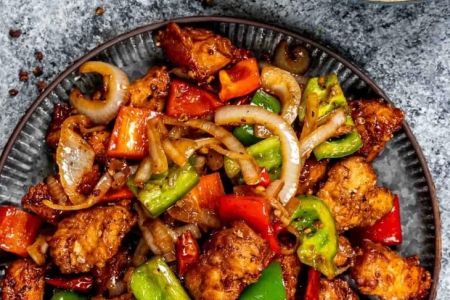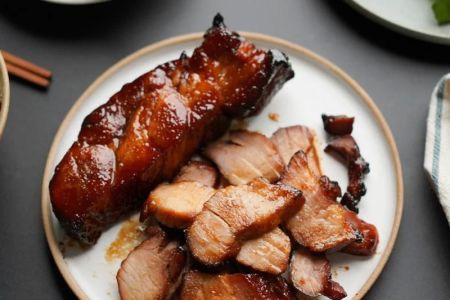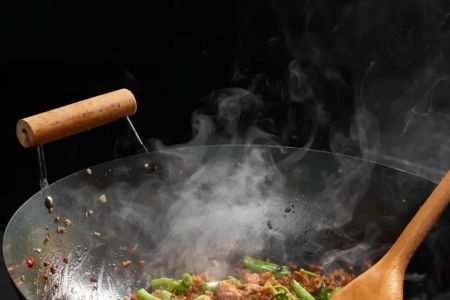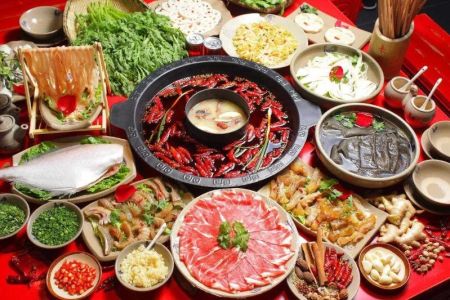Chinese Food Pairings: What to Order Together
If you’re like me, you love ordering Chinese food, but sometimes it can be tricky to figure out what to pair together to get the best flavor experience. After many years of dining at various Chinese restaurants, I’ve learned the art of pairing dishes for an unforgettable meal. Whether you’re a fan of traditional Cantonese, spicy Szechuan, or hearty Hunan cuisine, choosing the right combinations can enhance your dining experience and help balance flavors, textures, and temperatures. Here’s a guide on how to pair your Chinese dishes for the perfect meal.
1. Start with the Essentials: Soup and Dim Sum
Whenever I go to a Chinese restaurant, I always start with some kind of soup or dim sum. These dishes are perfect for warming up your taste buds and getting the meal started right. For instance, pairing a light and flavorful soup like hot and sour soup with a few pieces of dim sum is a fantastic start to any meal. The savory broth of the soup complements the delicate flavors of dim sum, creating a balanced and appetizing beginning.
1.1 Classic Soup Pairings
For a more traditional pairing, I recommend pairing wonton soup or egg drop soup with a few dim sum dishes like shrimp dumplings, siu mai, or steamed buns. The light broth works well to complement the rich and savory fillings in the dumplings. If you’re craving something with a bit of spice, a bowl of Szechuan hot and sour soup goes wonderfully with delicate spring rolls, offering the perfect mix of heat and crunch.
2. Combining Meat and Vegetables
When it comes to Chinese cuisine, it’s important to balance rich, meaty dishes with lighter vegetable-based ones. I love pairing a hearty meat dish like Kung Pao chicken with a side of steamed vegetables or a vegetable stir-fry like Buddha’s delight. The crunchiness and freshness of the vegetables provide a perfect contrast to the savory, spicy, and rich meat dishes.
2.1 Beef and Broccoli
Beef and broccoli is a classic combo that’s simple but delicious. I find it pairs beautifully with a side of fried rice, which helps balance the savory sauce of the beef and the freshness of the broccoli. If you’re a fan of heat, add some chili chicken or Szechuan shrimp to the table for a bit of spice. The balance of protein and veggies, along with the rice, creates a perfect meal.
2.2 Sweet and Sour Pairings
If you’re craving something a little sweeter, the tangy sweet and sour chicken pairs really well with something savory and rich like Mongolian beef. The sweetness of the chicken complements the bold, umami flavor of the beef, and together they make an irresistible combo. I love adding egg rolls or spring rolls on the side for that extra crunch.
3. Spice It Up: Szechuan and Hunan Flavors
If you enjoy the heat, you’ll love the bold flavors of Szechuan and Hunan cuisines. The key to pairing spicy dishes is balancing the heat with something more subtle or cooling. For instance, pairing spicy Szechuan shrimp or Mapo tofu with a milder dish like steamed rice or vegetable lo mein will help tone down the heat while still letting you enjoy the full depth of flavors.
3.1 Pairing with Rice and Noodles
Rice is the perfect base for spicy dishes. The neutral flavor of the rice helps absorb some of the heat, allowing you to enjoy the spiciness without overwhelming your palate. I always pair dishes like Kung Pao shrimp or Szechuan beef with a generous serving of fried rice or white rice. Noodles are also a great option, especially with spicy dishes like Szechuan noodles. The noodles help mellow out the intensity of the spice, making the meal even more enjoyable.
4. Exploring Regional Chinese Flavors
Another great way to explore Chinese food pairings is to dive into regional flavors. Different areas of China have unique tastes and ingredients that you can pair together. For example, pairing Cantonese roasted duck with a refreshing cucumber salad or a sweet and tangy orange chicken with crispy fried wontons offers a great way to taste the diversity of China’s culinary offerings.
4.1 Cantonese Cuisine
Cantonese cuisine is known for its subtle flavors and use of fresh ingredients. A dish like Cantonese roasted duck or char siu pork pairs wonderfully with a side of stir-fried vegetables or a simple bowl of steamed rice. The richness of the meats is nicely balanced by the fresh, lightly cooked vegetables.
4.2 Peking Duck
For a more extravagant pairing, Peking duck is always a crowd-pleaser. The crispy skin and juicy meat go perfectly with thin pancakes and hoisin sauce. I recommend pairing this with a mild side like stir-fried greens or a light soup like egg drop soup. The combination of textures—crisp duck, soft pancakes, and tender greens—creates a harmonious eating experience.
5. Desserts to End Your Meal
No Chinese meal is complete without a sweet ending. I always like to pair a rich main course with a lighter, refreshing dessert. Something as simple as sesame balls or mango pudding is the perfect way to cleanse your palate. For those with a sweeter tooth, fried bananas with honey are a great choice. The mild sweetness of these desserts offers a wonderful contrast to the savory and spicy dishes you’ve enjoyed throughout your meal.
5.1 Pairing Desserts with Tea
Pairing your dessert with a nice cup of Chinese tea is a great way to enhance the flavor experience. I personally enjoy pairing mango pudding with jasmine tea. The floral notes of the tea complement the sweetness of the mango, creating a light and satisfying end to the meal. If you're looking for something rich and indulgent, opt for a traditional Chinese red bean cake paired with oolong tea.






![Top Chinese Restaurants for Authentic Cantonese Cuisine in [Your City]](https://img.gochinarose.com/d33/2507/4157910400_450x300.webp)
